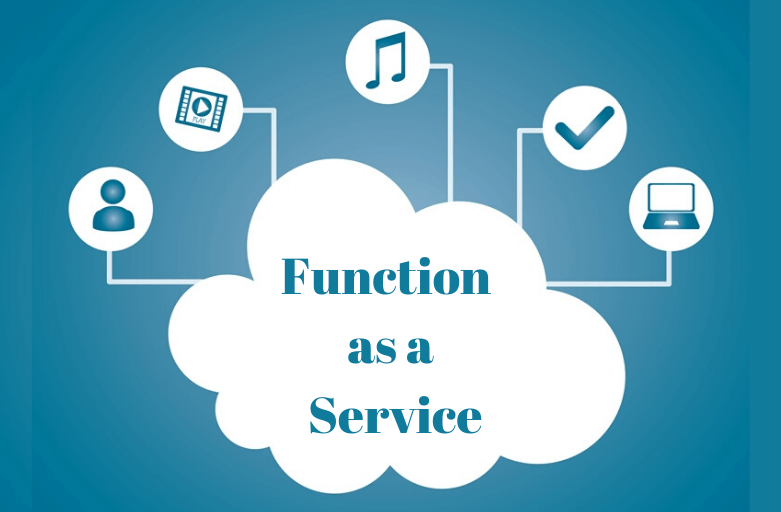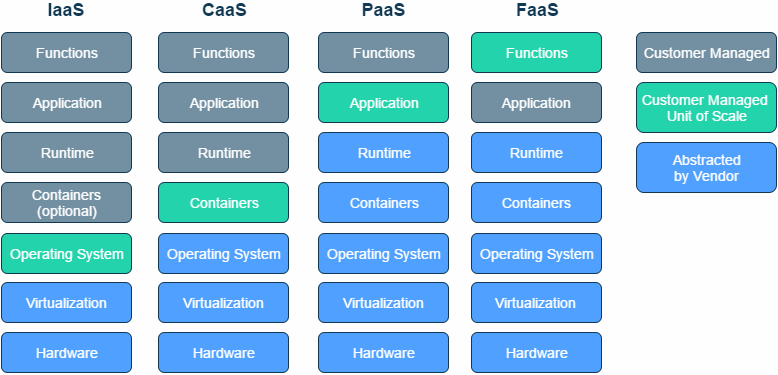Function as a Service (FaaS) represents a paradigm shift in cloud computing, allowing developers to build and deploy applications without managing servers. This approach, characterized by its event-driven architecture and pay-per-use model, offers unprecedented scalability and efficiency. Understanding FaaS unlocks opportunities to streamline development workflows, reduce operational overhead, and focus on core application logic rather than infrastructure maintenance.
This exploration delves into the architecture, key providers, practical applications, and future trends of FaaS, providing a comprehensive understanding for both seasoned developers and those new to the concept. We’ll examine how FaaS simplifies complex tasks, enhances application responsiveness, and contributes to a more agile and cost-effective development process. From its fundamental principles to advanced optimization strategies, we aim to equip readers with the knowledge to effectively leverage the power of FaaS.
Security Considerations in FaaS

Function as a Service (FaaS) offers significant advantages in terms of scalability and cost-effectiveness, but it also introduces unique security challenges. Understanding and mitigating these risks is crucial for deploying secure and reliable FaaS applications. The shared responsibility model inherent in FaaS means both the provider and the user have roles to play in maintaining a secure environment.
The distributed nature of FaaS, coupled with the often ephemeral nature of functions, necessitates a different approach to security compared to traditional applications. Vulnerabilities can arise from various points within the FaaS ecosystem, impacting both the application logic and the underlying infrastructure. Effective security strategies must address these challenges proactively.
Function Code Security
Secure coding practices are paramount in FaaS. Functions should be designed with minimal attack surface, adhering to principles of least privilege. Input validation and sanitization are critical to prevent injection attacks, such as SQL injection or cross-site scripting (XSS). Regular security audits and penetration testing should be conducted to identify and address vulnerabilities before deployment. Employing static and dynamic application security testing (SAST/DAST) tools can significantly improve the security posture of function code. Furthermore, keeping dependencies updated to their latest versions is essential to patch known vulnerabilities. Regular code reviews, especially by a team member not involved in the original development, also significantly improve code security.
Data Security in FaaS
Protecting data within a FaaS environment requires careful consideration. Sensitive data should never be hardcoded directly into function code. Instead, utilize secure environment variables, secrets management services provided by the FaaS platform, or dedicated key management systems. Encryption of data both in transit and at rest is essential. The use of managed services for databases and storage, which often include built-in encryption, is strongly recommended. Access control mechanisms should be implemented rigorously, limiting access to data based on the principle of least privilege. Regular data loss prevention (DLP) scans should be performed to identify and address potential data breaches. Furthermore, robust logging and monitoring mechanisms are needed to detect and respond to suspicious activity.
Infrastructure Security in FaaS
While the FaaS provider is responsible for the underlying infrastructure security, users still have responsibilities. Understanding the security features offered by the provider, such as network segmentation, access control lists (ACLs), and intrusion detection systems (IDS), is crucial. Proper configuration of these features is vital for protecting functions from unauthorized access. Leveraging the provider’s security tools, such as Web Application Firewalls (WAFs), can further enhance the security posture. Regularly reviewing and updating security configurations to align with best practices is essential. Choosing a reputable FaaS provider with a strong security track record is a critical first step.
Vulnerability Management in FaaS
A comprehensive vulnerability management program is essential for FaaS deployments. This involves continuous monitoring for vulnerabilities, both in the function code and the underlying infrastructure. Regular security assessments, including penetration testing and vulnerability scanning, should be performed to identify and address weaknesses. Automated security tools can assist in identifying and mitigating vulnerabilities quickly and efficiently. A well-defined incident response plan is necessary to handle security incidents effectively. This plan should Artikel steps for detection, containment, eradication, recovery, and post-incident activity. Regular training for developers and operations personnel on secure coding practices and security best practices is critical. This ensures that security is a top priority throughout the entire lifecycle of FaaS applications.
Future Trends in FaaS: Function As A Service (FaaS)

The Function as a Service (FaaS) landscape is constantly evolving, driven by advancements in serverless technology, increased demand for scalability and efficiency, and the ever-growing complexity of modern applications. We’re seeing a convergence of trends that promise to significantly reshape the future of FaaS and its role within the broader cloud computing ecosystem. These developments are not just incremental improvements; they represent fundamental shifts in how we design, deploy, and manage applications.
The next generation of FaaS platforms will likely focus on enhanced developer experience, improved security, and greater integration with other cloud services. This will involve streamlining the development workflow, automating security processes, and creating seamless connections with databases, messaging systems, and other essential components. Moreover, the increasing adoption of artificial intelligence (AI) and machine learning (ML) will further propel the evolution of FaaS, leading to more intelligent and autonomous serverless applications.
Enhanced Developer Experience
FaaS platforms are continuously striving to improve the developer experience, making it easier to build, deploy, and manage serverless functions. This includes advancements in integrated development environments (IDEs), improved debugging tools, and more robust monitoring and logging capabilities. For example, some platforms are incorporating features like automated code completion, visual function editors, and simplified deployment pipelines. These enhancements aim to reduce the friction associated with serverless development, making it more accessible to a wider range of developers. The result will be a more rapid development cycle and increased productivity.
Advanced Security Features
Security remains a paramount concern in the FaaS environment. Future trends suggest a greater emphasis on automated security testing, integrated security policies, and enhanced access control mechanisms. We can expect to see more sophisticated features like automated vulnerability scanning, runtime protection, and serverless-specific security information and event management (SIEM) tools. For instance, advanced threat detection systems using machine learning algorithms will become increasingly prevalent, proactively identifying and mitigating potential security breaches. This will lead to a more secure and resilient FaaS ecosystem.
Serverless AI and Machine Learning
The integration of AI and ML capabilities within FaaS platforms is rapidly gaining traction. This allows developers to easily incorporate machine learning models into their serverless functions, enabling intelligent applications that can adapt and learn from data in real-time. Imagine a serverless image recognition function that automatically adjusts its parameters based on the incoming images. Or a fraud detection function that continuously improves its accuracy based on new data. This combination of FaaS’s scalability and AI/ML’s power unlocks new possibilities for developing sophisticated and dynamic applications.
Edge Computing Integration
The integration of FaaS with edge computing is another significant trend. By deploying serverless functions closer to the data source (e.g., on IoT devices or edge servers), latency is reduced, and bandwidth consumption is minimized. This is particularly crucial for applications requiring real-time processing of data, such as autonomous vehicles or industrial automation systems. The combination of FaaS’s scalability and edge computing’s low latency will drive the development of new applications in areas such as real-time analytics, IoT device management, and augmented reality experiences. Examples of this integration are already emerging in the telecommunications and manufacturing industries.
Increased Serverless Orchestration and Management, Function as a Service (FaaS)
Managing complex serverless deployments can be challenging. Future trends indicate an increased reliance on sophisticated orchestration and management tools. These tools will help developers automate deployment, scaling, monitoring, and troubleshooting processes. This automation will reduce operational overhead and improve the overall efficiency of serverless applications. Imagine a system that automatically scales serverless functions based on real-time demand, or a platform that automatically detects and resolves performance bottlenecks. These advanced capabilities will simplify the management of large-scale serverless deployments.
In conclusion, Function as a Service (FaaS) has emerged as a transformative technology in the cloud computing landscape. Its ability to abstract away server management, coupled with its inherent scalability and cost-effectiveness, makes it an attractive solution for a wide range of applications. While security considerations and performance optimization remain crucial aspects, the ongoing advancements and expanding ecosystem of FaaS promise to further solidify its position as a cornerstone of modern application development.
Function as a Service (FaaS) represents a significant advancement in cloud computing, offering a highly scalable and cost-effective solution. Understanding its place within the broader cloud landscape requires examining the distinctions between different service models, such as those detailed in this excellent resource: Comparison of IaaS PaaS SaaS A Comprehensive Overview. Ultimately, FaaS’s event-driven architecture sets it apart, making it ideal for specific use cases where traditional approaches prove less efficient.
